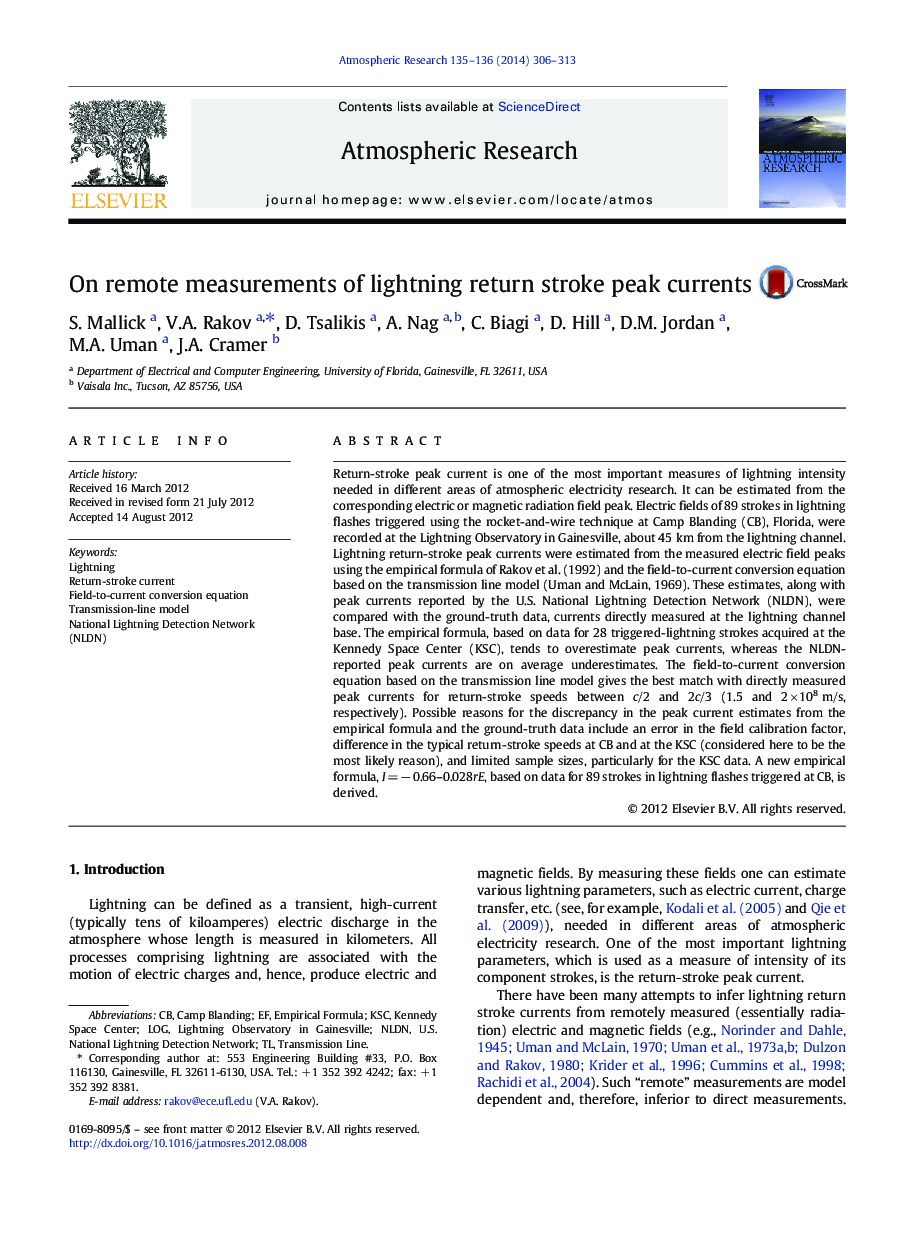| Article ID | Journal | Published Year | Pages | File Type |
|---|---|---|---|---|
| 6343738 | Atmospheric Research | 2014 | 8 Pages |
Return-stroke peak current is one of the most important measures of lightning intensity needed in different areas of atmospheric electricity research. It can be estimated from the corresponding electric or magnetic radiation field peak. Electric fields of 89 strokes in lightning flashes triggered using the rocket-and-wire technique at Camp Blanding (CB), Florida, were recorded at the Lightning Observatory in Gainesville, about 45 km from the lightning channel. Lightning return-stroke peak currents were estimated from the measured electric field peaks using the empirical formula of Rakov et al. (1992) and the field-to-current conversion equation based on the transmission line model (Uman and McLain, 1969). These estimates, along with peak currents reported by the U.S. National Lightning Detection Network (NLDN), were compared with the ground-truth data, currents directly measured at the lightning channel base. The empirical formula, based on data for 28 triggered-lightning strokes acquired at the Kennedy Space Center (KSC), tends to overestimate peak currents, whereas the NLDN-reported peak currents are on average underestimates. The field-to-current conversion equation based on the transmission line model gives the best match with directly measured peak currents for return-stroke speeds between c/2 and 2c/3 (1.5 and 2 Ã 108 m/s, respectively). Possible reasons for the discrepancy in the peak current estimates from the empirical formula and the ground-truth data include an error in the field calibration factor, difference in the typical return-stroke speeds at CB and at the KSC (considered here to be the most likely reason), and limited sample sizes, particularly for the KSC data. A new empirical formula, I = â 0.66-0.028rE, based on data for 89 strokes in lightning flashes triggered at CB, is derived.
⺠Three methods to infer lightning currents from measured fields are evaluated. ⺠Directly measured rocket-triggered lightning currents are used as the ground truth. ⺠NLDN tends to underestimate lightning peak currents. ⺠New empirical formula is derived.
